Argentina’s Primera División is heading into the latter stages of the second phase of the 2024 campaign, with just five points separating first and sixth.
Joint-league leaders CA Huracán boast the division’s best defensive record in the second phase, letting in just four goals in 12 games — they are also undefeated in those 12 games, and that defensive record is largely to thank for it.
Frank Darío Kudelka, who is in his third spell in charge of the club, would likely hope for a better attacking record from his team, who have scored just 12 goals in the 12 second-phase games, but will be more than satisfied with the performance at the back.
The first phase of the season was a slightly different story for Huracán in terms of their league position, as they finished ninth in Group A.
Goalscoring was a problem in that phase, too, with 12 goals in 14 games.
However, their defensive record in the first phase was also their biggest strength.
They conceded 12 in 14, the third-best record in their group.
So, clearly, their defensive record in this second phase is no fluke—and it is currently fueling a charge for the top spot.
In this Huracán scout report, we will provide a tactical analysis of Huracán’s tactics out-of-possession as we look to uncover the secrets behind their impressive defensive output, which has propelled them into the title race.
Huracán Defensive Formation – Mid block With Midfield Aggression
Data and performance tell us that one key element in Huracán’s defensive tactics is a balance between pressing and sitting off.
With a challenge intensity of 6.4 and a PPDA register of 8.37 (both stats around the average mark in comparison to all 27 other teams in the league in the second phase), we know that they aren’t the type to sit deep and invite pressure into their own final third.
But those numbers also tell us that they aren’t the most aggressive team in Argentina—clearly, the balance they have struck is working.
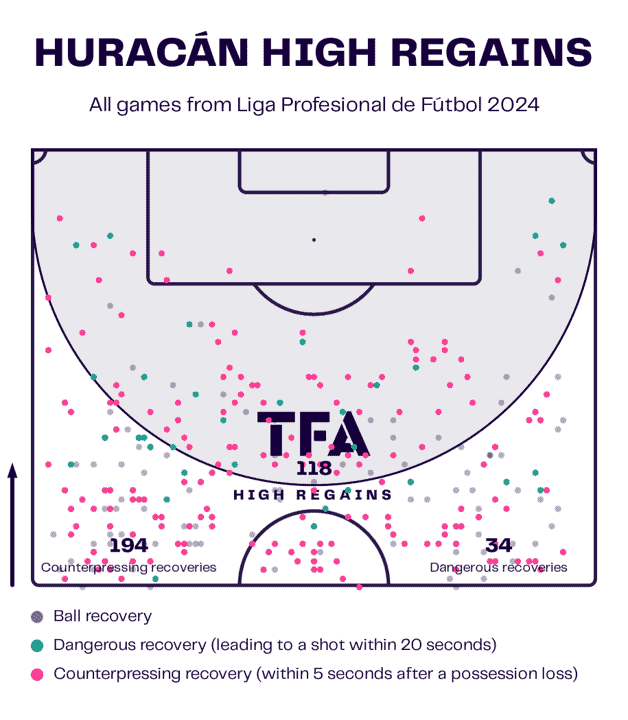
This visual gives us an insight into how Huracán operate in the opposition half when they don’t have possession.
To provide context, the Primera División’s most aggressive team (according to PPDA and challenge intensity) is River Plate, and so far this season, they’ve made 199 counterpressing recoveries, 118 high regains, and 43 dangerous recoveries, so Huracán really can offer that off-the-ball danger in the opposition half.
So, by posting similar numbers to the league’s most aggressive team, how can Huracán have lower PPDA and higher challenge intensity?
It’s all in the timing and execution of their pressing—they take the essence of mid-block tactics, allowing the opposition time on the ball at the back but not sitting deep, and incorporate a series of pressing triggers in terms of opposition actions and locations.
We keep using the word ‘balance’, and that word holds more weight than Huracán just applying a mid-block when it comes to their general positioning out-of-possession.
The analysis images that follow explain that balance in terms of how/when they press, as well as taking a deeper look at their counterpressing tendencies.
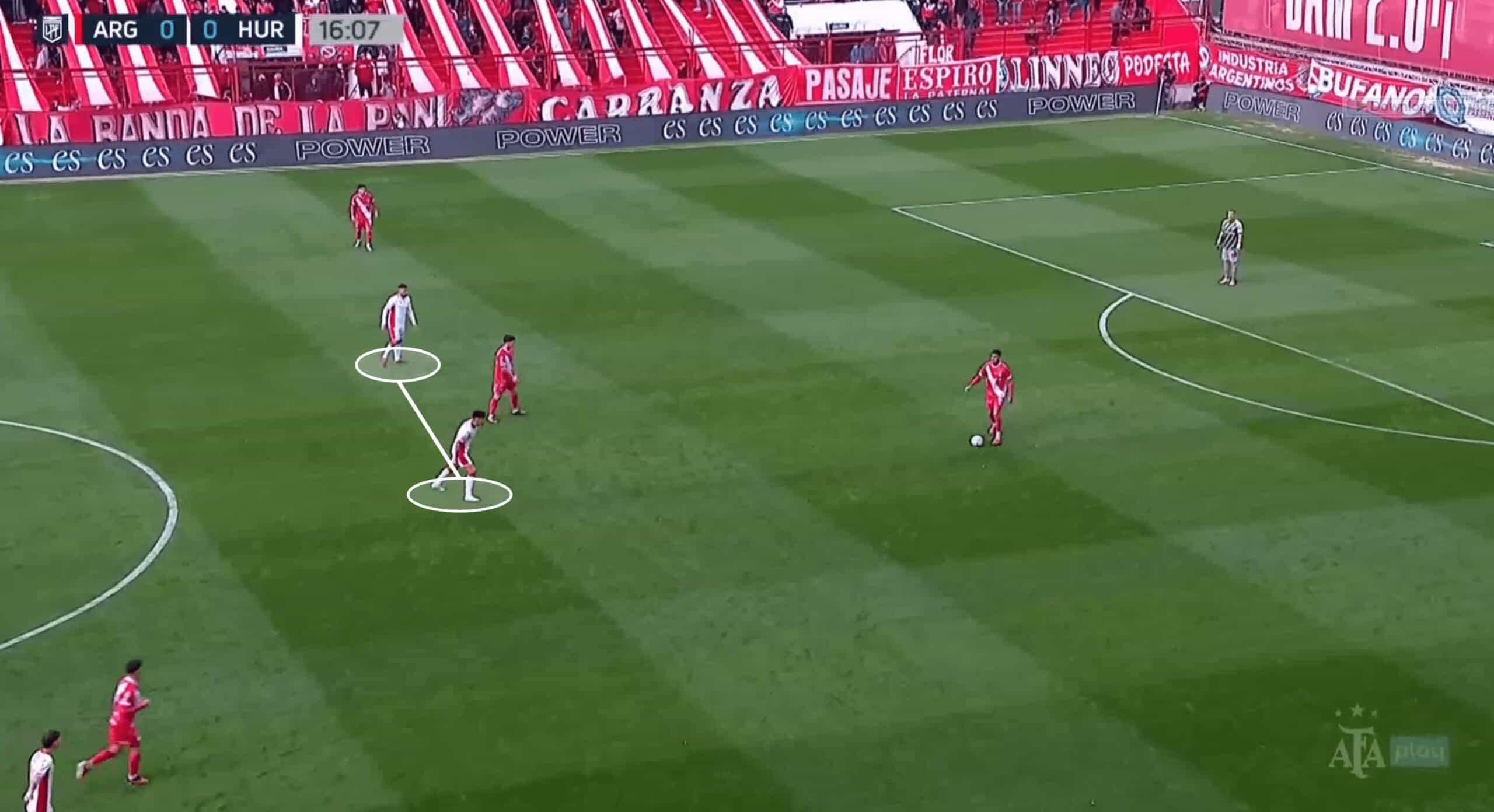
Huracán’s formation tends to differ depending on opposition tactics, expected lineups, etc., but they are most likely to deploy one of four formations – 4-2-3-1, 4-4-2, 4-1-4-1, or 4-3-3.
Regardless of the formation in use, the tactics often remain the same.
Notice how the two forwards in the example above are sitting off the ball, allowing him time on the ball.
The distance from them to the ball is not the only important distance—it is also important to recognise and understand why the two forwards are sat narrowly alongside each other.
In other tactical systems, you may see more width in the front two, allowing them to press in wide areas as the opposition build out from the back.
Huracán, however, wants their forwards to stop the opposition from playing through the middle in these early stages of the build-up phase.
When they operate in a 4-1-4-1 or 4-4-2, they can rely on the partnership between the wide midfielder and full-back to combat the opposition threat in wide areas, as we will discuss in more detail later.
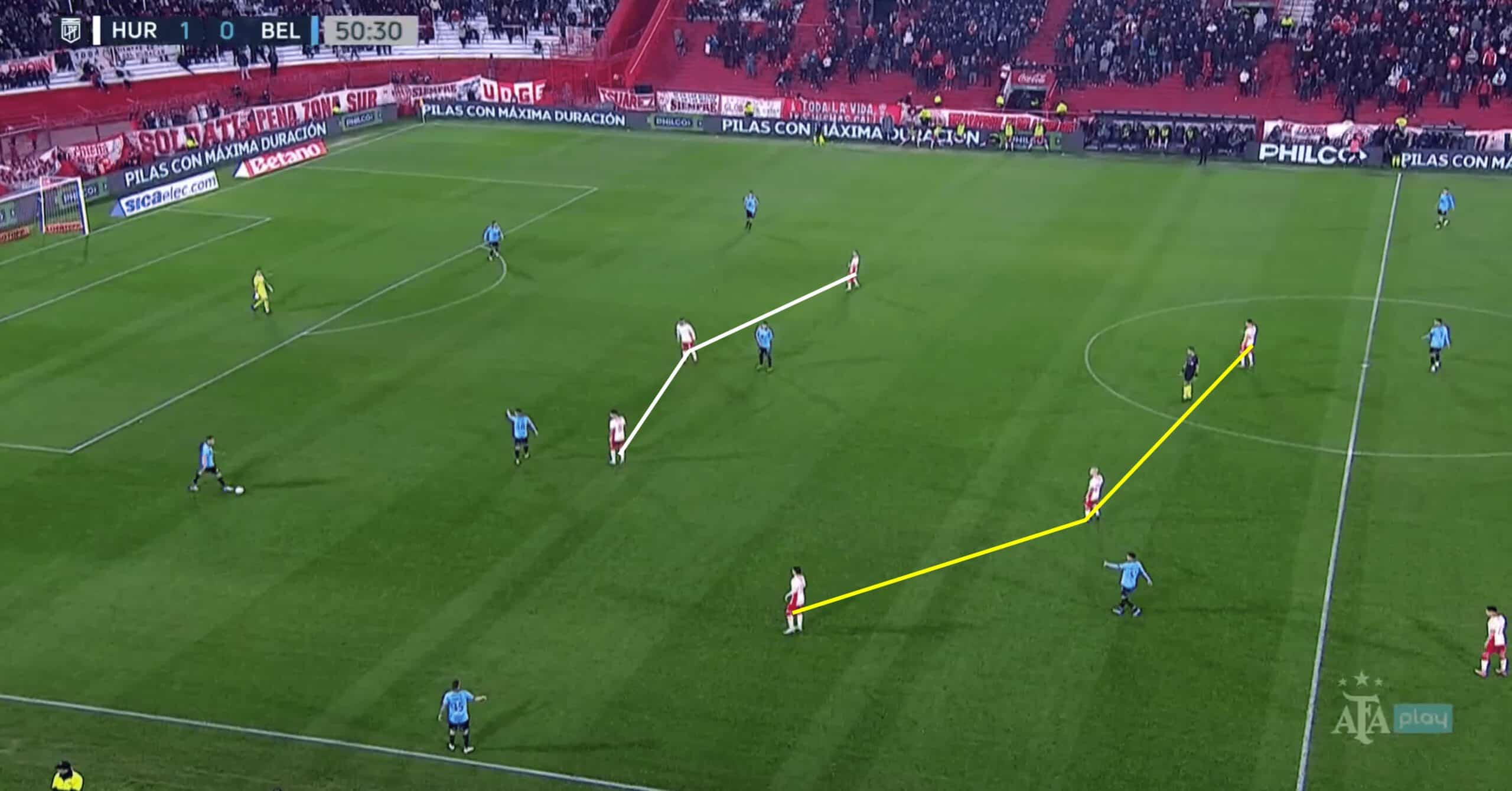
This example shows us the same principles in terms of the actions of the front line, but in a 4-3-3 instead – we also get a taste of how the midfield operates in these moments.
This particular example is a slightly higher mid-block than you would typically see, but the approach still holds the fundamentals of a mid-block in terms of Huracán biding their time with the press.
Note again the narrow shape of the front three, as they look to block out the opposition’s possibility of playing through the middle, while the midfield three can cover the early wide threat if necessary.
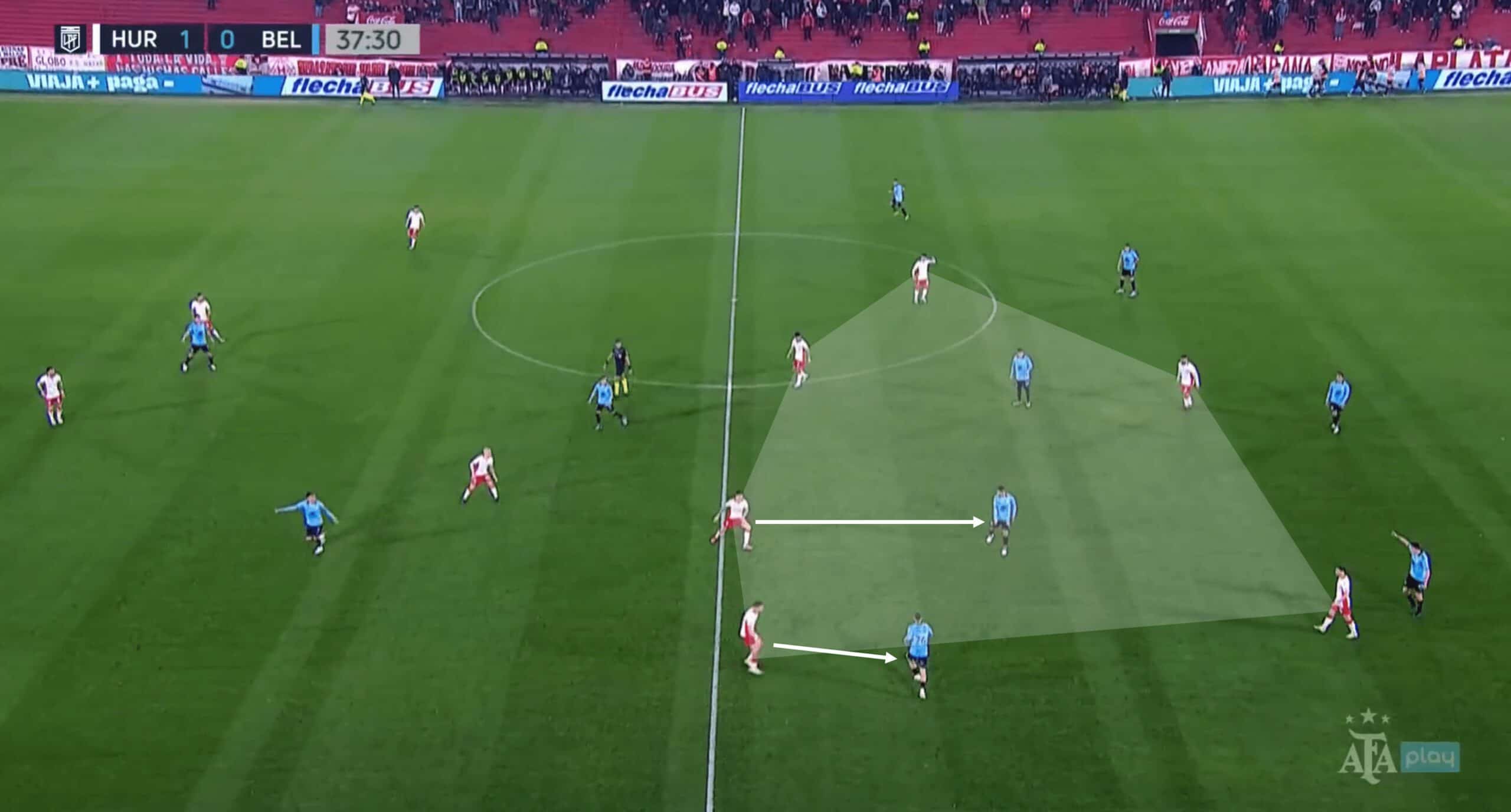
When looking at the first visual, which detailed Huracán’s off-the-ball activity with high regains, you may have noticed that they are particularly effective at counterpressing.
The variety in width between the front line and the midfield unit can be tricky for the opposition to play through – combined with the sudden surge of aggression that Huracán can inject, turnovers in possession are likely in midfield areas.
While Huracán will look to increase the intensity and aggression in midfield areas anyway, that effort is multiplied in the event of a transition, which is when we see the aforementioned counterpessing ability.
They manage to execute such tactics while maintaining a strong positional structure in midfield to protect the back four, creating even more issues for the opponent.
The image above shows how they can choke the space during transitions.
The ball is pressed quickly and close by passing options being marked, limiting the opposition’s possibilities of continuing their build-up.
Intercepting play is a real strength for Huracán —they rank sixth in the league for interceptions per 90 (43.71 per 90); it is useful in multiple scenarios, including dealing with defensive transitions.
Huracán Use Of Narrow Full-Backs
We’ve already mentioned Huracán’s use of the partnership between the full-back and winger/wide midfielder, which is an important tool in their tactics.
The concept of narrow full-backs is an interesting one, and one that must be carried out when it compliments the tactics as a whole – Huracán’s approach does this as they expect the winger/wide midfielder to come back and support the full-back, almost playing as a makeshift wing-back in some scenarios.
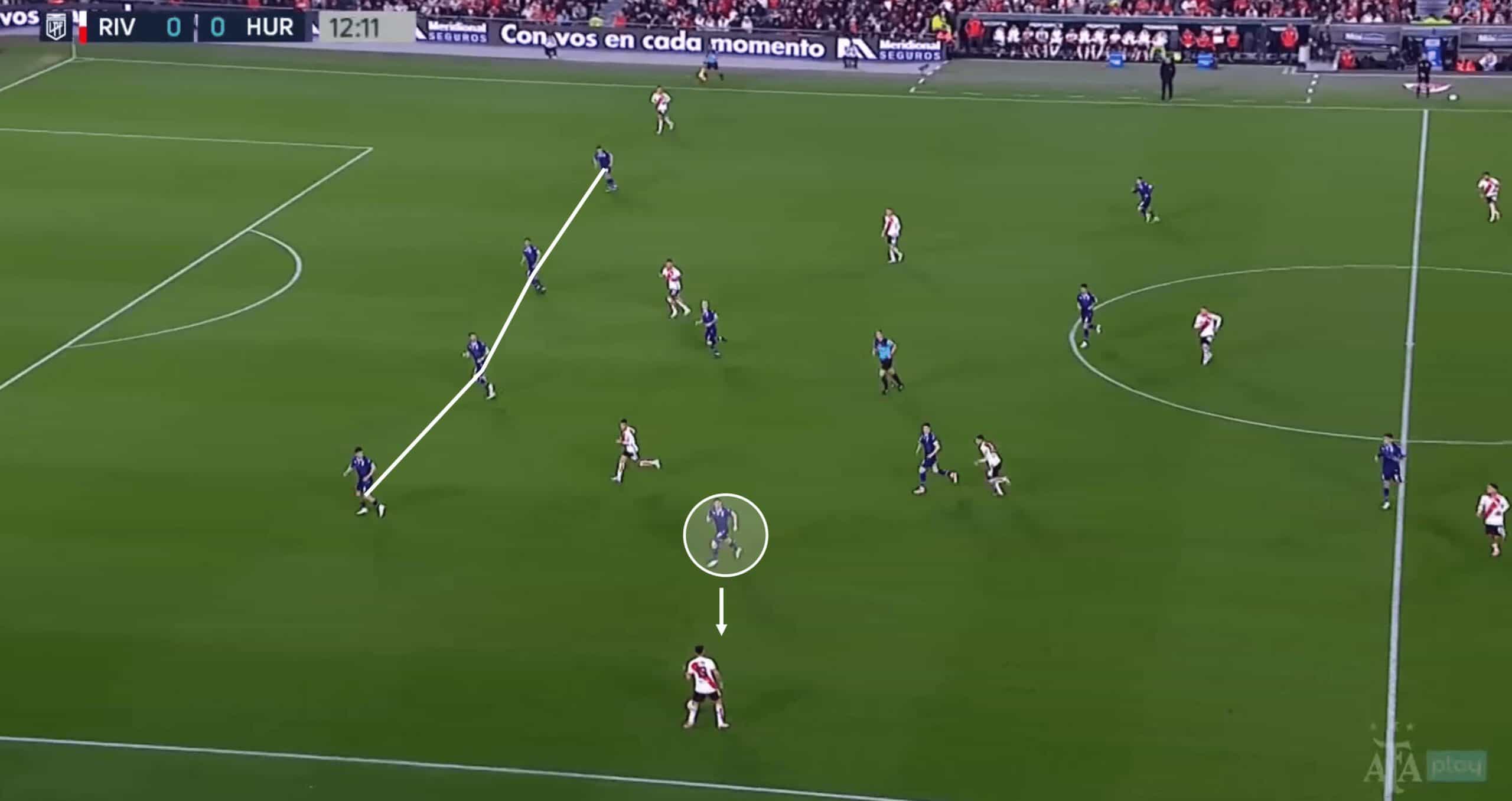
This example shows us everything we’ve spoken about regarding narrow full-backs and a supporting wide midfielder playing the wing-back role.
That wide midfielder is tasked with pressing the ball, but only in the right moment.
He usually has to stay with his midfield unit initially until they are back in a stronger defensive position.
On to the full-back – with many teams and tactics, you’d expect the full-back to engage with the ball and apply pressure or at least be higher and wider than the rest of his defensive unit – but that’s the point with these tactics.
Huracán wants to maintain a defensive structure.
The right-back’s positioning in the image above is also important for covering space that the opponent may have looked to exploit if he had rushed out to the ball.
Imagine, if you will, the right-back did close the ball down — the space he’s in either gets left free for the nearby opponent to make a dangerous run into, or the rest of his defensive unit has to cover the space, which would stretch them and give the opposition more chance of dangerous runs through the backline.
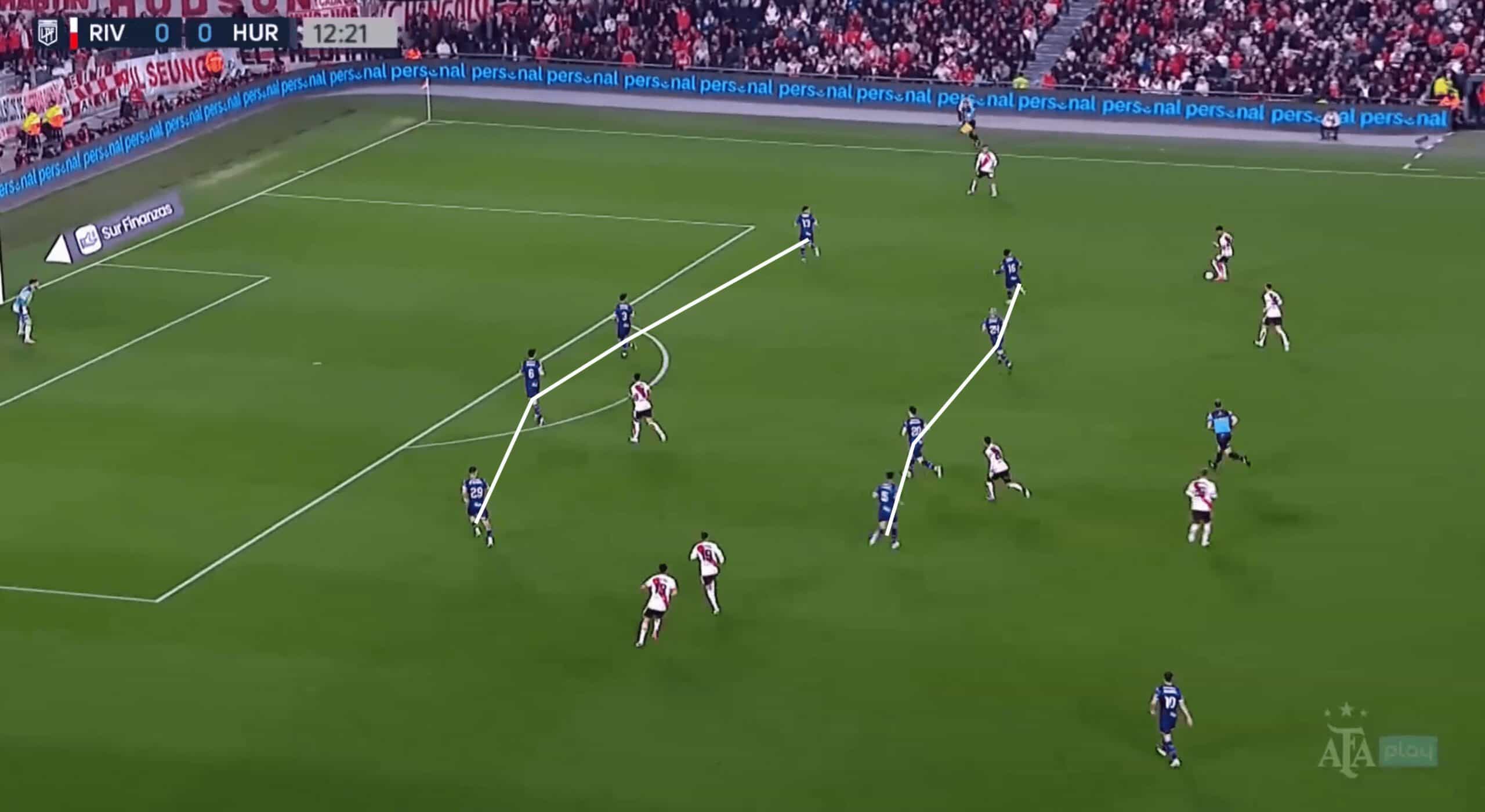
Even as the opposition approach the box and increase their attacking presence, Huracán look to stick to their guns and maintain that narrow shape.
Huracán were actually playing a 4-3-3 formation in this fixture, but they do like to adopt a 4-4-2 shape for certain defensive situations.
Focus your attention on the positioning of the left back and left midfielder.
Their immediate defensive responsibility lies with them, yet they remain positionally intact with their respective units, only going to press when necessary.
It could be argued that the left-winger in the image above can press the ball, but if he goes too early, another opposition midfielder ahs the chance to make a run into that space and execute a passing combination to bypass the Huracán midfield.
This is not to say that defensive engagement from full-backs is low in this Huracán team; they are just big believers in timing it correctly to protect the structural integrity of their defensive setup.
Huracán Key Players
A strong tactical base is obviously a key to success.
But, in the spirit of an Arne Slot quote from the opening weekend of the 2024/25 Premier League season, if you’re not going to win your individual battles, you can forget about tactics.
At times, tactics will only get you so far – often, individual traits and abilities can be key to a strong defensive unit, and Huracán certainly have some superstars in that respect.
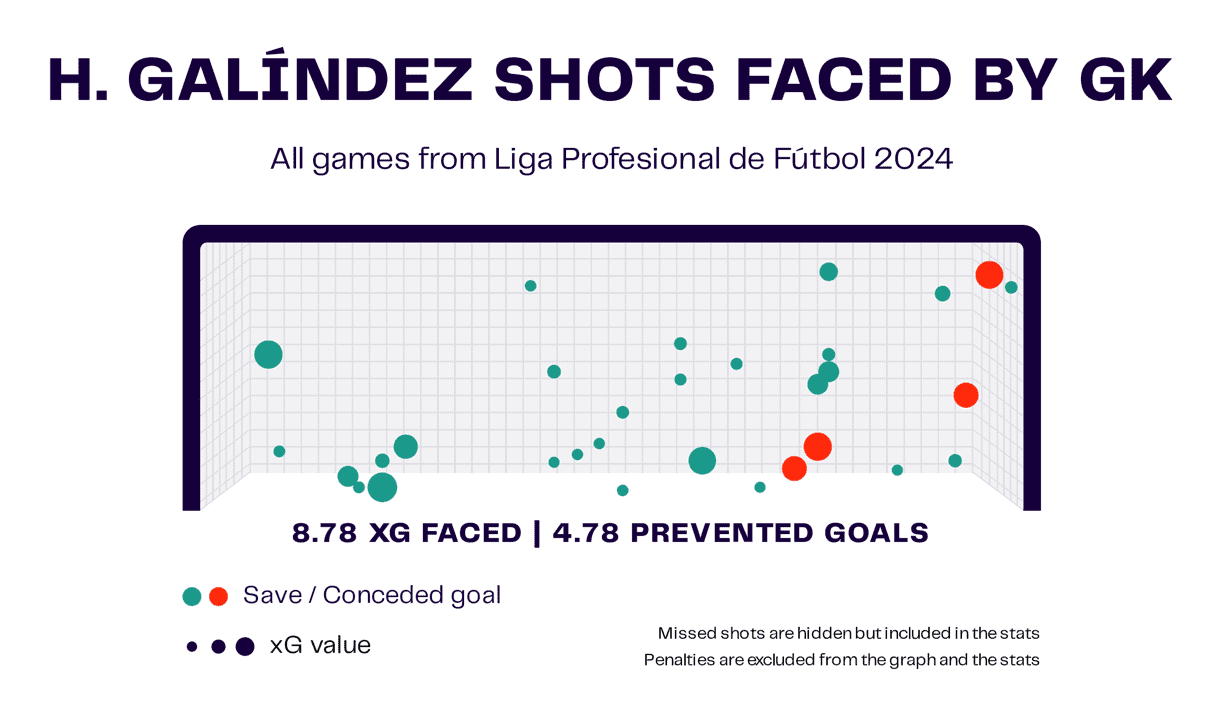
We start with their veteran goalkeeper, Hernán Galíndez, who has played a crucial part in the team, only conceding four goals in 12 games.
Interestingly, all four of those goals have come to his left side.
His record of 4.78 prevented goals is quite astounding when you consider the fact that he has prevented more goals than he has conceded in this second phase of the campaign.
In a wider context of a league comparison, his register of 0.44 goals conceded per 90 is the second-best in the whole league – Huracán do concede chances, but they have a talisman in goal who is keeping a lot of them out.
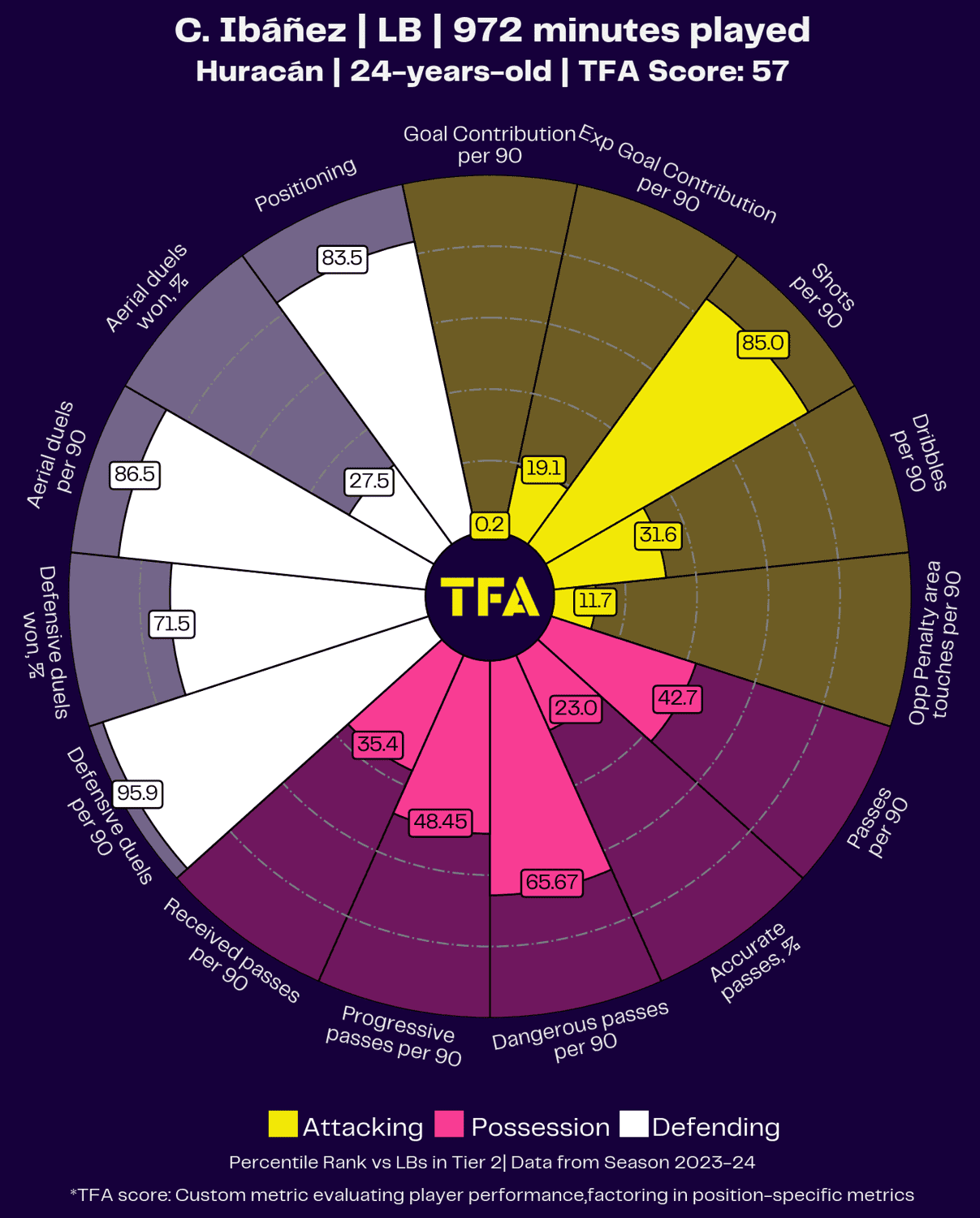
Huracán averages 76.77 duels per 90, the league’s fourth-highest average at the time of writing, suggesting a high defensive engagement.
This falls in line with what we spoke about with aggression in midfield areas and defensive engagement in key moments in the defensive third.
Left-back César Ibáñez is a big contributor to that defensive engagement, which proves our point about Huracán full-backs still having a strong defensive involvement despite the narrow shape they often take up.
Ibáñez offers 11.03 defensive duels per 90 – only five players in the entire division have a higher engagement than that, and as you can see from his strong percentile posting above, he wins a good number of those duels.
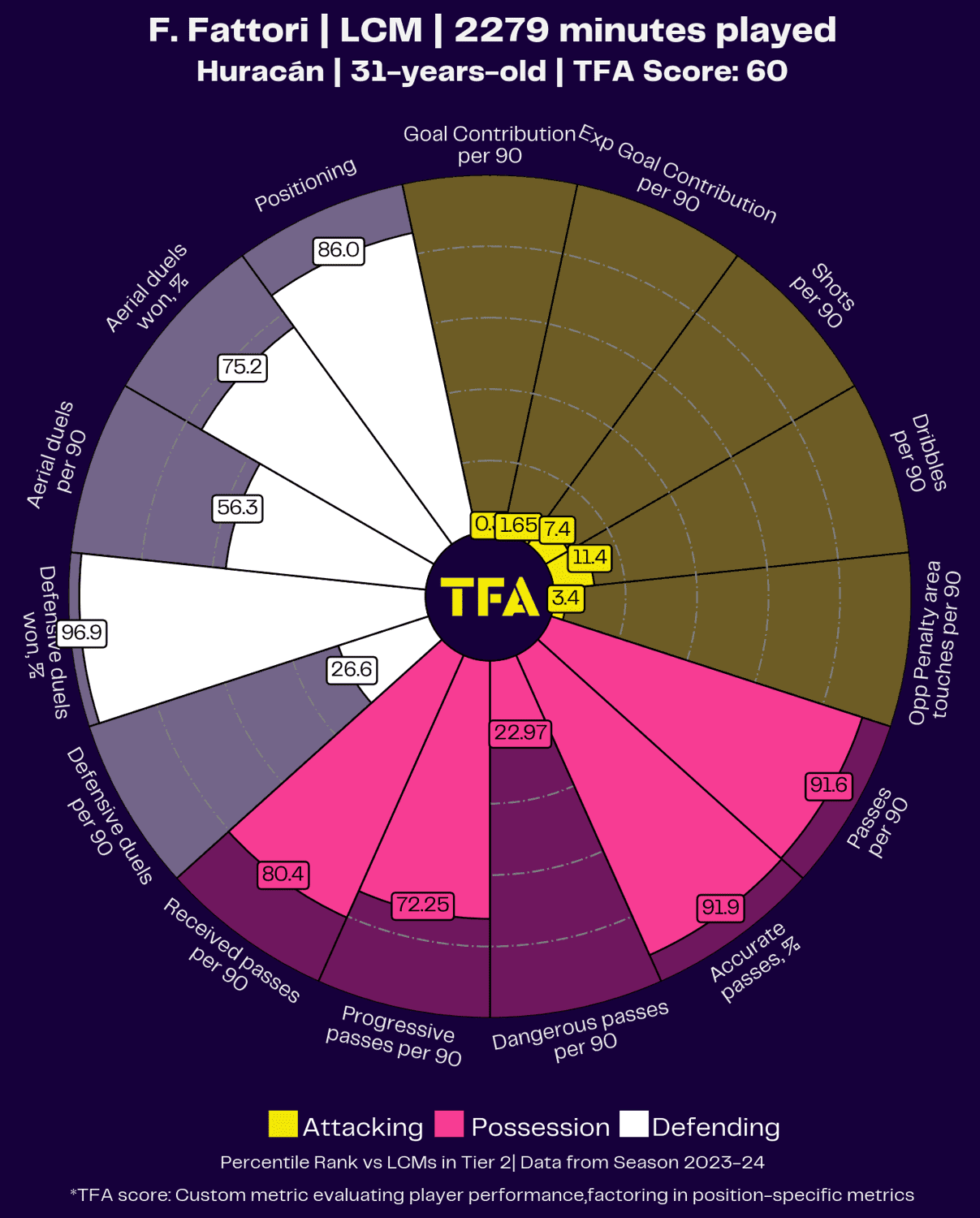
Our third and final difference maker in terms of Huracán’s defensive tactics is Federico Fattori, a defensive midfielder who has an exceptional ability to read the game.
As we mentioned, a key part of Huracán’s tactics is the use of interceptions to halt opposition build-up play, and Fattori takes the lead when it comes to making interceptions — he averages a whopping 8.67 per 90: more than anybody else in the entire division, so there is no denying the importance of his presence.
As his percentile chart tells us, he is also important for Huracán in several areas, both out and in possession.
He makes a good number of progressive passes to boost build-up phases, for example.
Conclusion
Unbeaten in 12, best defensive record in the league – it’s hard not to respect Huracán’s work to date.
While their attacking record could hinder their title charge, if they do claim glory, it will be due to their fantastic defensive output.
From a clever mid-block to effective counterpressing executions to consistent quality from individuals in key areas, Huracán have become a team that others simply don’t look forward to playing.

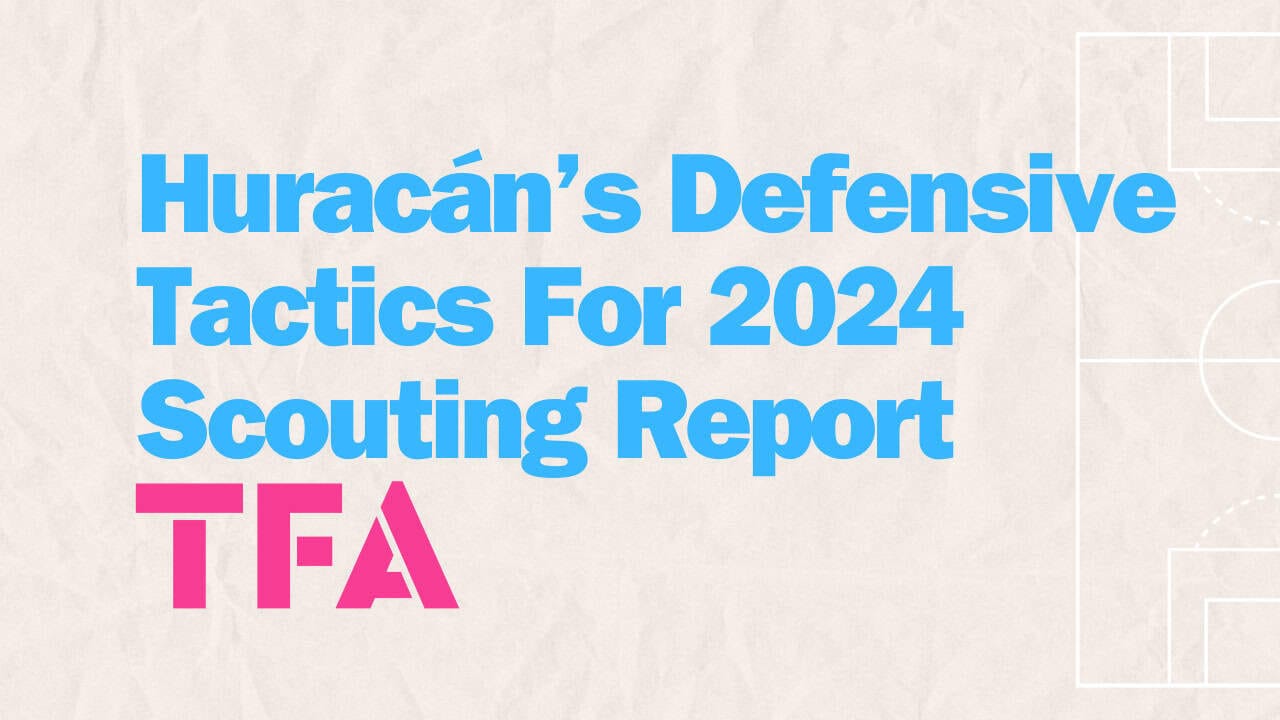




Comments